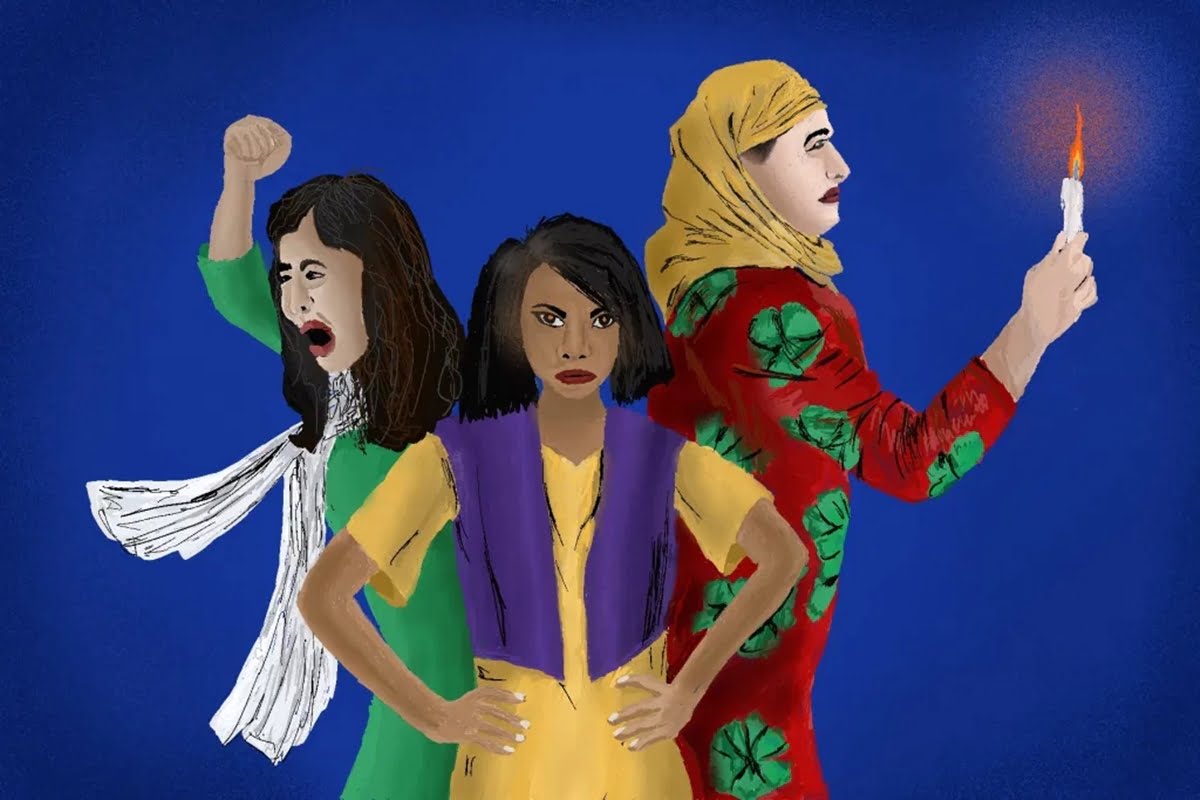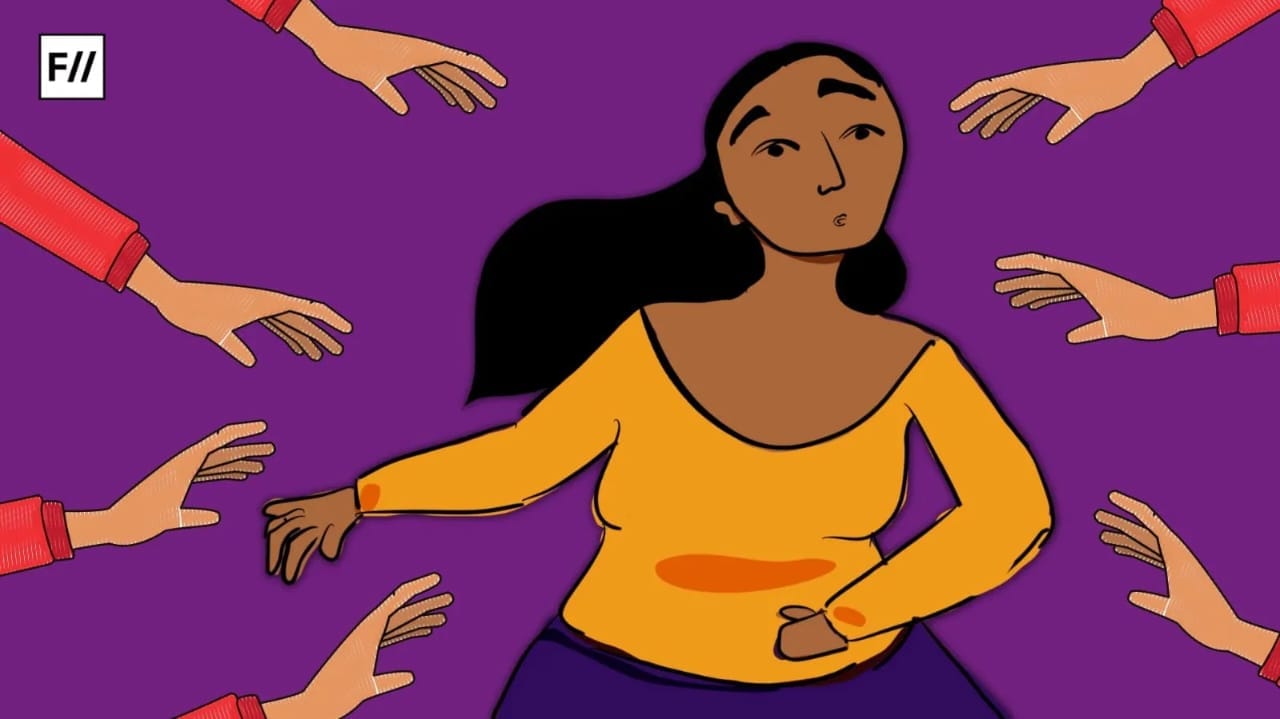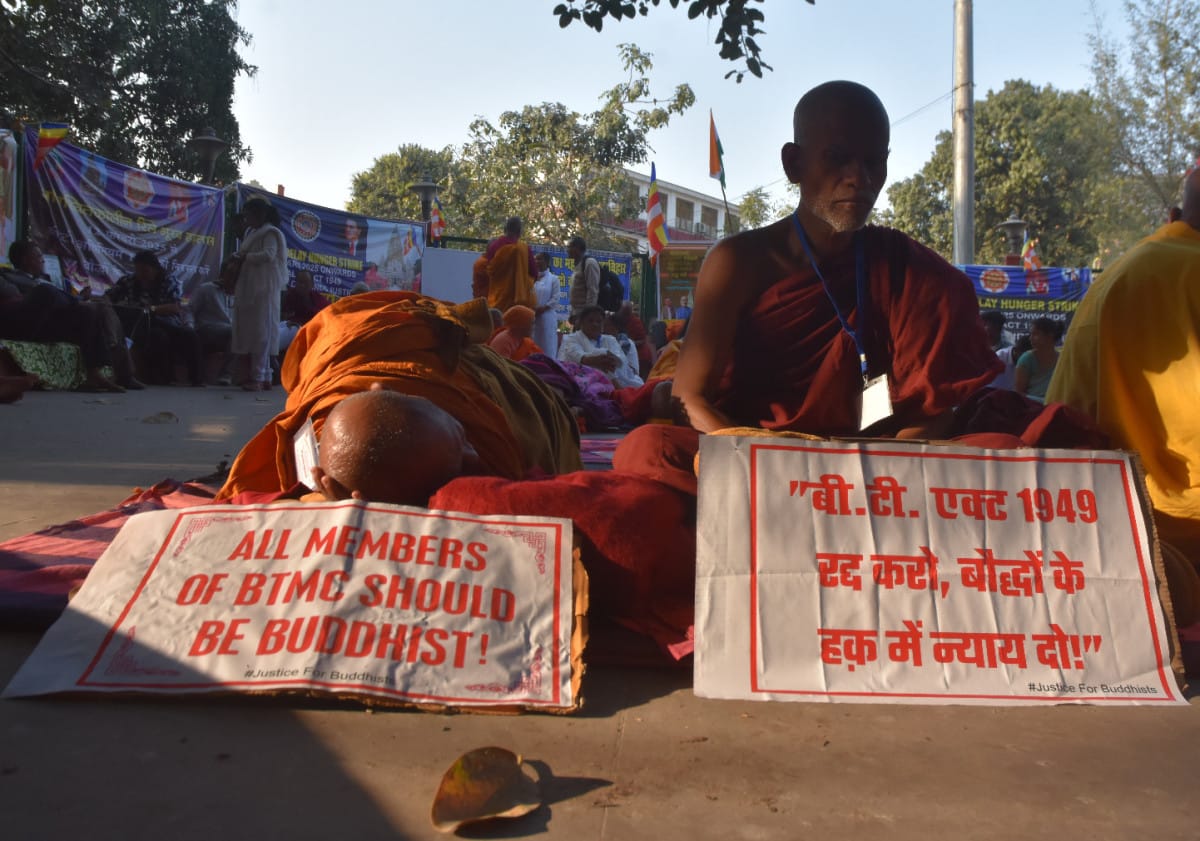Trigger Warning: Islamophobia, violence against Muslim women
On 4th and 5th July, Muslim women in India found themselves at the receiving end of yet another form of violence levelled at them by Hindu right-wingers. A large number of photos of Muslim women were taken from the Internet and sold as the “deal of the day” on an app called Sulli Deals, platformed on GitHub, an Internet hosting software provider. “Sulla” and “Sulli” are anti-Muslim slurs used by the Hindu extremists. The photos, reportedly sourced from their social media accounts, consist of women from various walks of life (pilots, journalists etc.).
In addition to underlining how digital spaces have become increasingly unsafe for women, this incident was yet another reminder that despite the standing Indian Muslim women are gaining in a society with all odds stacked against them, they continue to be examined by the majoritarian Hindu male gaze, a symptom of the rot that Hindutva has inflicted for decades on Indian societies.
the Sulli Deals incident Is yet another reminder that despite the standing Indian Muslim women are gaining in a society with all odds stacked against them, they continue to be examined by the majoritarian Hindu male gaze, a symptom of the rot that Hindutva has inflicted for decades on Indian societies.
Despite the absolute horror of this tech-savvy violation, crimes against Muslim women continue to gather much less attention in the media and other public forums than crimes against upper caste Hindu women. One just has to compare the lack of outrage and awareness that the auction incident has generated with the nationwide uproar during the Boys Locker Room incident in 2020, which too took place in Delhi. Such diminished outcry is in the grand tradition of mainstream Indian public life repeatedly ignoring violence against Muslim, Dalit, Bahujan and Adivasi women. At this point, one is reminded of how Muslim women’s bodies have, time and again, been the sites of communal crimes and battles, such as the rapes during the Gujarat riots of 2002, the Kunan Poshpora incident of 1991, the Muzzaffarnagar riots of 2013, to name a few. What has followed in almost all of these cases is a complete denial when not delay of justice for the victims.
Also read: Sulli Deals: An Everyday Reality For Muslim Women In India
It would be far fetched to say that hatred towards Muslim women is solely an Indian phenomenon. Such objectification is common around the world, Boris Johnson’s comments in 2018 on burqa-clad Muslim women being letterboxes and bank robbers, is one glaring example. Another blatant example are the many bans on burkinis imposed in France. It is important for us to recognise what these are: hatred directed at Muslim women with the intention to unclothe them, objectify them or tag them as anti-social threats with wide ranging intentions: blocking immigration and justifying wars against predominantly Muslim countries through the generation of a “terrorist” discourse in Europe and the US, imposition of a white, or in India’s case, an imagined Hindu virility, or the criminalisation and thus, otherisation, of Muslim men by tagging them as the sole oppressors of Muslim women, case in point, the triple talaq judgement.
Muslim women have been depicted as licentious creatures by white authors as evidenced by Flaubert’s portrayal of Kuchuk Hanem or the many instances of the eroticisation of harems. As soon as their religious status or names are revealed, Muslim women are imagined in public life as passive victims of Muslim men or as backward perpetuators of patriarchy — women who have been denied the light of modernity. I write with complete awareness of how problematic concepts of western modernity can be for Muslim women and that is exactly the point.
Perhaps no greater discursive injustice can be done to Muslim women than the rhetoric created by sections of feminists every time one more such incident comes to light. Crimes that specifically target Muslim women are written off as crimes against women and in the process, invisibilise the daily horror that Hindutva, Zionism and white supremacy rain down upon Muslims in general and Muslim women in particular. Such reductive readings dismiss the fact that these crimes arise out of religious hatred in order to justify geopolitical aggression or the systematic disenfranchisement of India’s largest religious minority.
In many cases, the faith of practicing Muslim women too becomes a threat, like in the case of Hadiya, when an entire nation was conveniently confounded by the resistance offered by the faith of a newly converted woman against aggression from her Hindu family, the paternalism of the courts, and a repeated itch of feminists around the country to tag the Hadiya case as a question of the choice of women, and not the threat presented by a converted Muslim woman.
Black feminists have long resorted to the word “misogynoir” in order to reference incidents of violence against black women where racism and sexism come together. To the best of my knowledge, there is no such term for the violence experienced by Muslim women that arises from their religious status. There exists an urgent need to name these injustices for what they are. The phenomenon of gendered anti-Muslim and Islamophobic oppression should not go unnamed; thousands of Muslims (practicing and non-practicing) across the world fall prey to it. A general hatred of women who live by Islam or have been born into Muslim families is a regular occurrence in societies across the world, not just in India. This internationally occurring oppression is held together by petrocapitalism, Zionism, Hindu nationalism in India and Buddhist nationalism in countries like Myanmar, and justified with the ridiculous excuse that Muslims are so horrible a group that they are hated internationally. This flimsy argument ignores the root causes (colonialism, capitalism, geopolitical conflicts, supremacist ideas) and presents a one true cause for the international hatred for Muslims.
When the question of Muslim women is brought up, the criminalised Muslim man is used as an example of a perfect oppressor: at once an immigrant, a mafia don, a terrorist, a patriarch, uncontrollable and hurling bombs at passers-by from whom Muslim women need to be saved urgently.
This is not to say that Muslim women do not face patriarchy at home. Gendered oppression of Muslim women exists within the family as well and differs from the oppression of Hindu women. For Hindu families, protecting their women is a question of honour but the enemy (the otherised man) is imagined. For Muslim families, the enemy is very real. Muslim women are indeed at a higher risk of state-sponsored violence and for them to assert themselves against conceptions of honour and controlling family behaviour is to walk a very thin line between maintaining their own safety and standing up to any abusive family. Related areas of concern include the implementation of property rights, pressure to get married and therefore, have a protector etc. These problems are expected to get worse in India as the state becomes more anti-Muslim.
Also read: The Status of India’s Muslim Women Amid State-Directed Violence and COVID-19
With more pogroms that target the women in order to shame the men of the community, right-wingers within Muslims (which again is an international phenomenon prevalent in Muslim predominant countries too) are likely to gain more traction by stressing on Muslim masculinity and asking men to protect their women. In India, the core of the problem remains the rise and rise of Hindutva forces. It is wreaking double and perhaps triple layered (think of Dalit Muslim women) havoc on the lives of Muslim women.
Internationally, I associate the phenomenon with an itch to see the Muslim woman stripped naked as a sexual slave (like the selling of Muslim women online) or the desire to imagine them as perpetual sufferers. Gendered anti-Muslim hatred manifests when non-Muslims cannot stomach why women wish to convert to Islam or when casual offensive comments are made about the hijab. It also manifests when the collective anger of Muslim women’s protests is dismissed as terrorism. Even non-Muslim women are capable of gendered anti-Muslim hatred when they stereotype Muslim women as simply “shanto” (Bengali for “quiet”) and/or “dharmic” (religious) and as a result of that, unable to present a challenge. Non-practicing or non-hijabi Muslim women face similar issues when Hindutva groups attempt to humiliate them publicly in an attempt to prove their masculinity.
While upper caste Hindu women are subjugated through the stereotype of the goddess while being promoted as emancipated through new woman stereotypes, Muslim (and Adivasi, Dalit and Bahujan) women in India are subjugated through rapes, in order to make the community “toe the line”, or simply to punish the women themselves.
At its core, gendered anti-Muslim hatred or Islamophobia is a question of dehumanisation. Muslim women are simply far more dehumanised than their Hindu counterparts. While upper caste Hindu women are subjugated through the stereotype of the goddess while being promoted as emancipated through new woman stereotypes, Muslim (and Adivasi, Dalit and Bahujan) women in India are subjugated through rapes, in order to make the community “toe the line”, or simply to punish the women themselves.
They are sold online because the right leaning fabric of the Indian nation (and this globalised, petrocapitalist world) does not see them as human beings; complex in their aspirations, varied in their beliefs, different from one another in their specific experiences and always, always resisting every generalisation.
Featured Image Credit: Aasawari Kulkarni/Feminism In India
About the author(s)
Ekabali Ghosh is an M. Phil. student in the Department of English, Jadavpur University. She is a feminist activist with about four years experience of organizing on the ground. She is the founder of Women Against Sexual Harassment, a platform that supports survivors of sexual violence and Queer Studies Research Cluster, an interdisciplinary network of researchers in the field of queer studies. She is passionate about issues of social justice, feminist theory and eating junk food. She can be found on Facebook and Instagram.





Kunan pospita incident never happened. it was confirmed by Indian Human Rights council by Dr. Varghese.